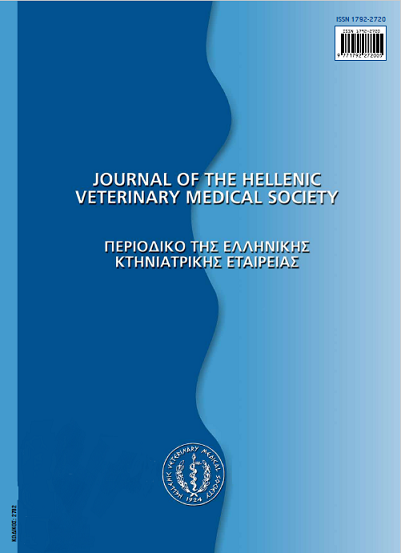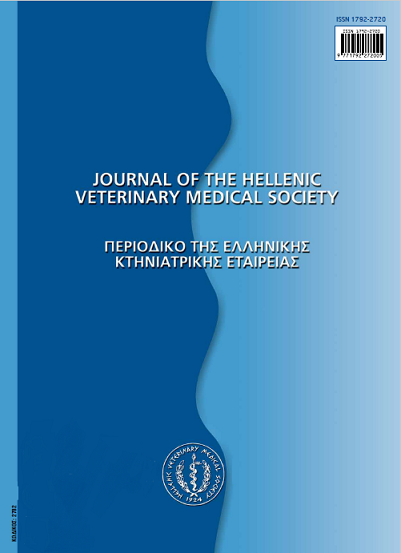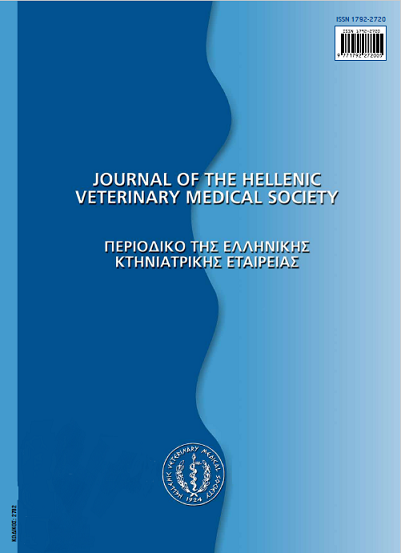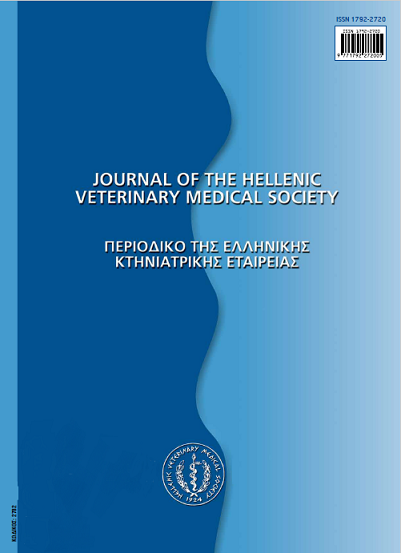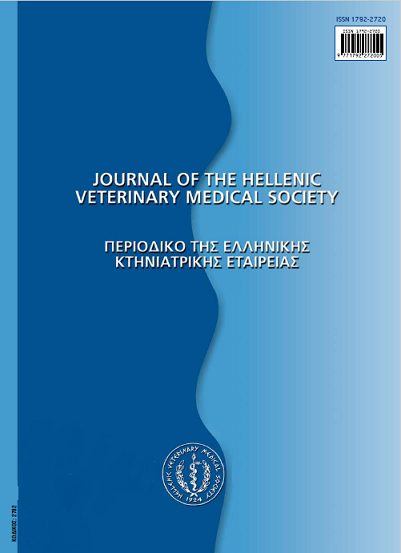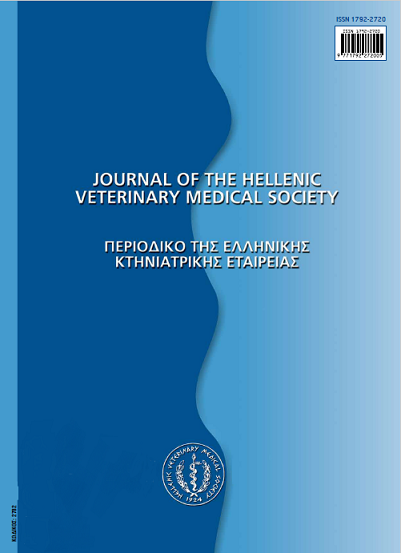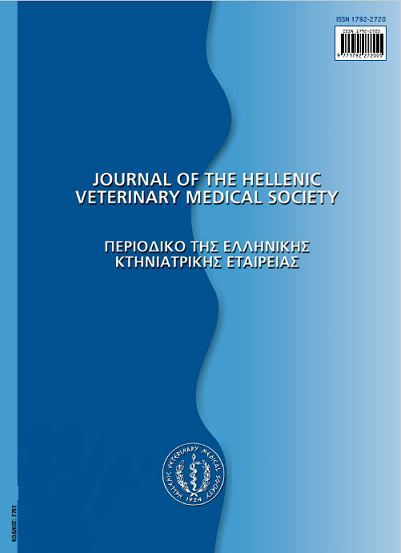Correlation between equine colic and weather changes
Abstract
The objective of this study is to evaluate the possible correlation between relative humidity/temperature change and equine colic in a specific region of Northern Greece. A study population of 823 adult horses stabled in a 40-km-radius around Thessaloniki, Northern Greece were included in this study; a total of 245 horses, suffering from several types of colic between January 2010 and December 2012 were selected. Metereological data, including temperature (oC) and relative humidity (%) were obtained as 3-hour periodic measurements by the Hellenic National Metereological Service. Statistical analysis was performed using Spearman correlation coefficients in order to assess the relationship between temperature changes, relative humidity changes and equine colic. A positive correlation between temperature change and equine colic was detected during March for the whole 3-year period, while positive correlation was presented during several months of late spring and late fall in specific years. No correlation between changes in relative humidity values and colic was shown. Moreover, a negative correlation between relative humidity and temperature, for temperatures >10°C (rho=-0.568, p<0.01) was found, while, a positive correlation (rho=0.650, p<0.01) between daily temperature difference (ΔT) and relative humidity difference was detected. In this study, abrupt temperature change was proven as a significant risk factor in the development of colic during late spring and fall, in Northern Greece, requiring more vigilant horse owners and equine practitioners. These results suggest that in the future it may be possible to modulate management taking into consideration the current weather conditions, in order to prevent colic episodes.
Article Details
- How to Cite
-
DIAKAKIS (Ν. ΔΙΑΚΑΚΗΣ) N., & TYRNENOPOULOU (Π. ΤΥΡΝΕΝΟΠΟΥΛΟΥ) P. (2018). Correlation between equine colic and weather changes. Journal of the Hellenic Veterinary Medical Society, 68(3), 455–466. https://doi.org/10.12681/jhvms.15542
- Issue
- Vol. 68 No. 3 (2017)
- Section
- Research Articles

This work is licensed under a Creative Commons Attribution-NonCommercial 4.0 International License.
Authors who publish with this journal agree to the following terms:
· Authors retain copyright and grant the journal right of first publication with the work simultaneously licensed under a Creative Commons Attribution Non-Commercial License that allows others to share the work with an acknowledgement of the work's authorship and initial publication in this journal.
· Authors are able to enter into separate, additional contractual arrangements for the non-exclusive distribution of the journal's published version of the work (e.g. post it to an institutional repository or publish it in a book), with an acknowledgement of its initial publication in this journal.
· Authors are permitted and encouraged to post their work online (preferably in institutional repositories or on their website) prior to and during the submission process, as it can lead to productive exchanges, as well as earlier and greater citation of published work.




